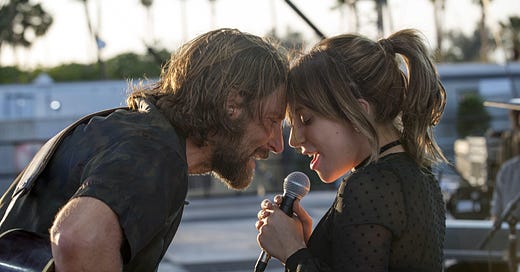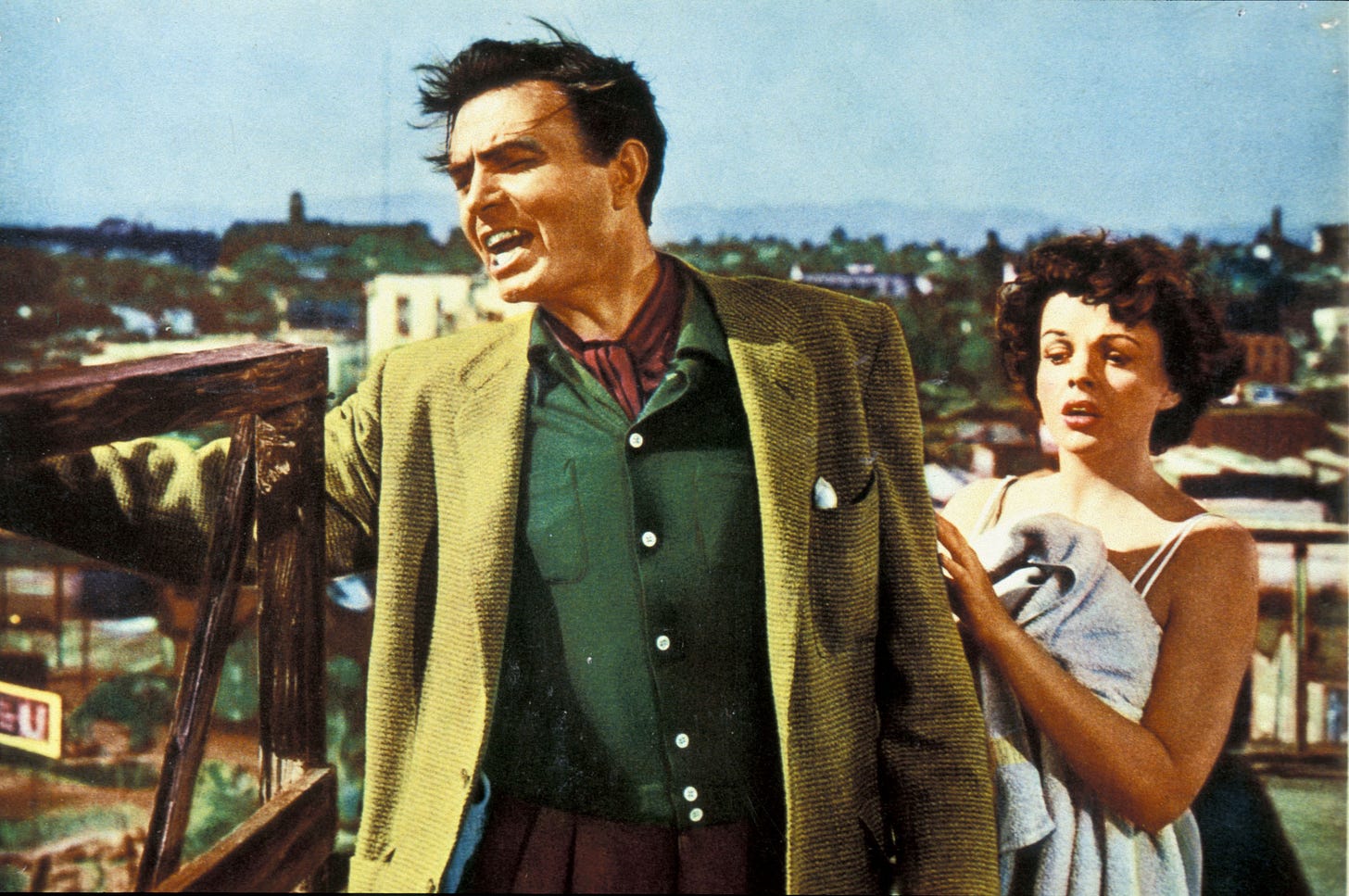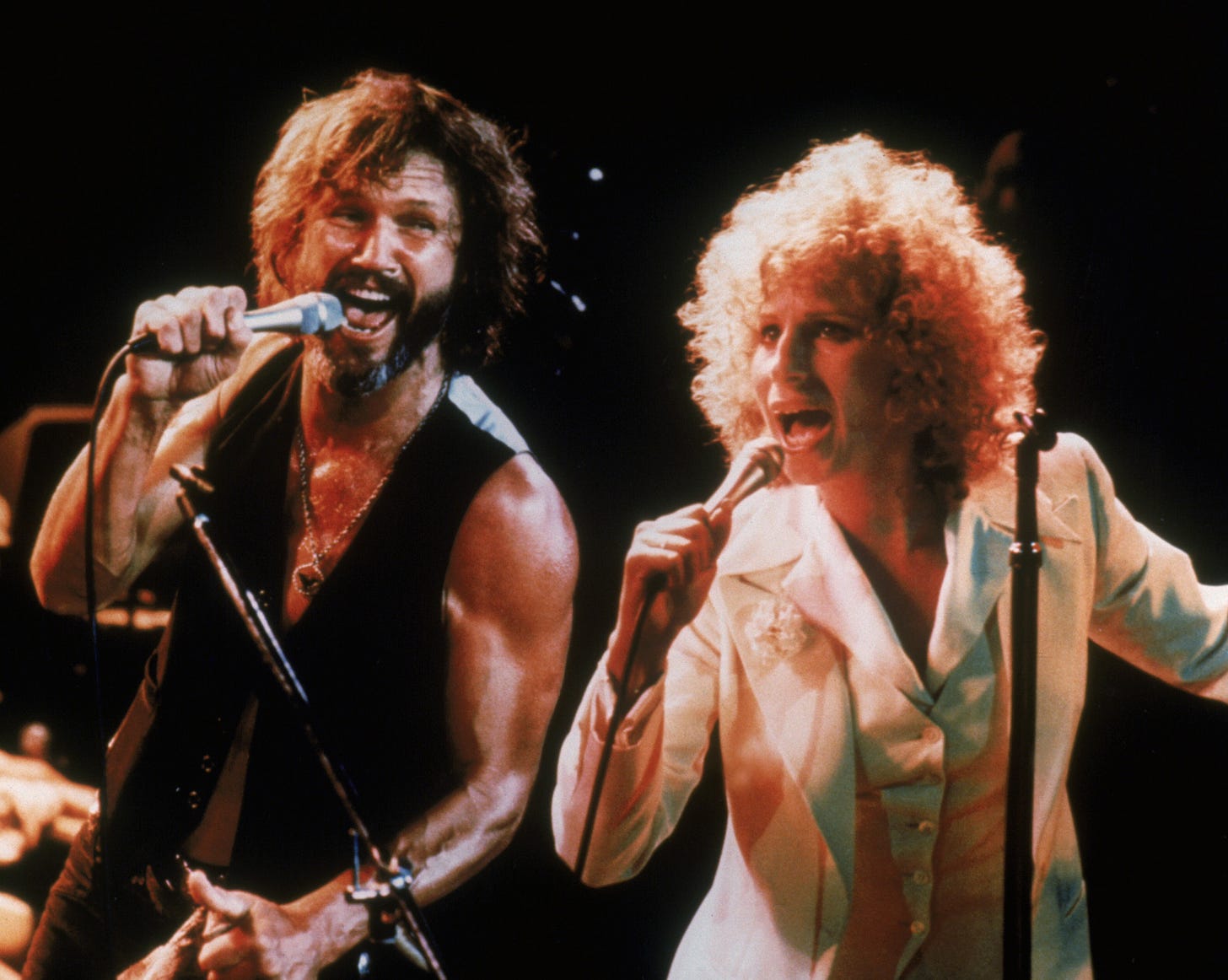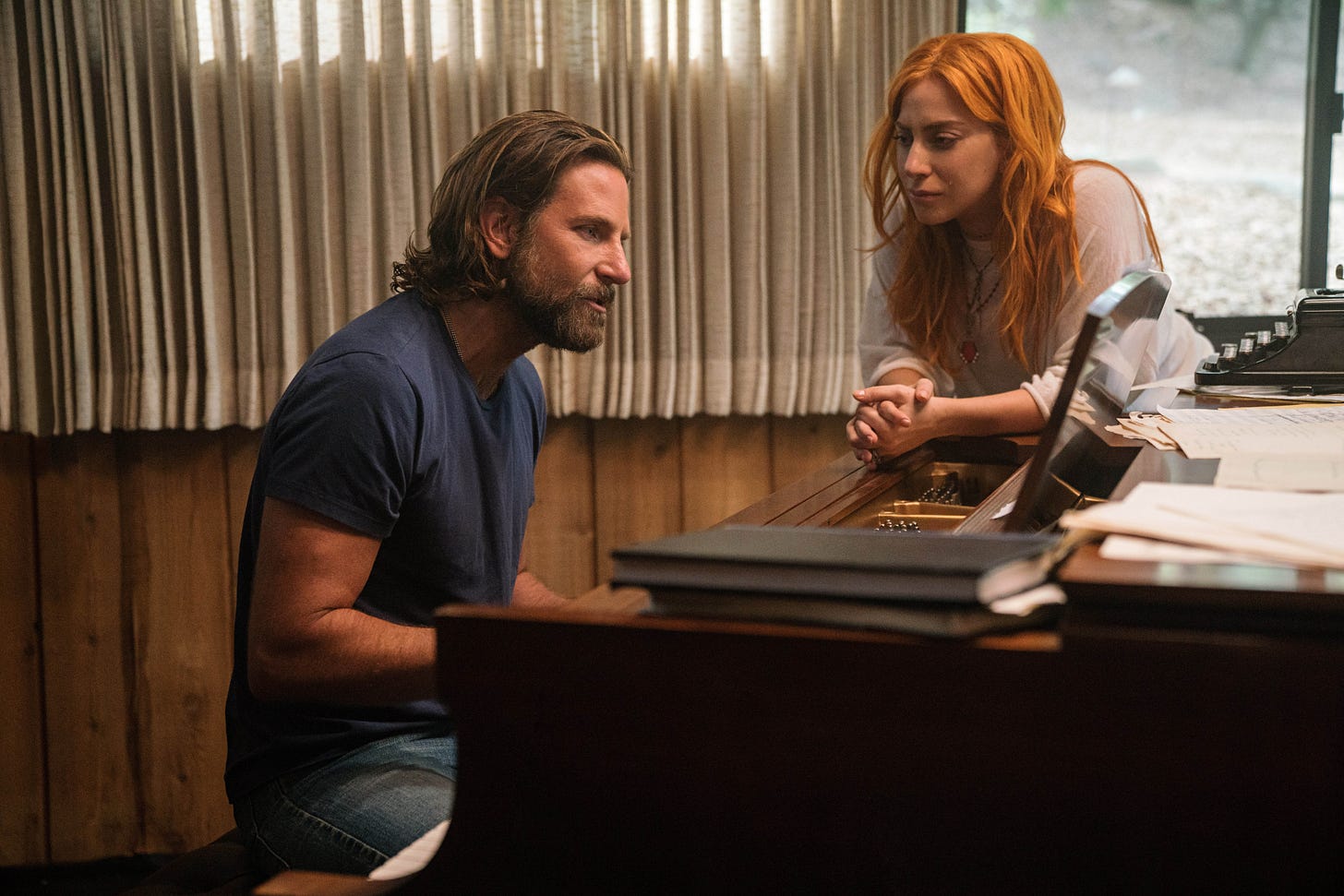Minor spoilers for the 1954, 1976 and 2018 versions of A Star is Born. Trigger warnings for discussions of mental health and brief mentions of abuse.
Cinema captures the zeitgeist better than almost any other art form, offering a clear vision of what matters at a particular time. For me, few films do this better than A Star is Born.
From women’s roles to men’s mental health and filmmaking itself, each version brings something new to the table. Most people know the Lady Gaga/Bradley Cooper remake, but watching it alongside the others (as I’ve recently loved doing) offers a fascinating glimpse into how culture and society have evolved.
All the films' plots are roughly the same: a struggling artist is discovered by a fading star; he makes her famous, they fall in love, and then tragedy strikes. This may sound simplistic, but that’s because, for once, the story doesn’t matter much.
What makes each of these movies unique isn’t the plot, but how it captures a moment in time. Each takes the same narrative — often even the same dialogue — and reshapes it to reflect its era. It’s a fascinating way of looking both at filmmaking and societal shifts.
The splendor (or squalor) of technicolour!
Unlike its descendants, George Cukor’s 1954 version is set amid the glitz and glamour of 1950s Hollywood. Still the world’s biggest attraction at the time, the film captures its sophistication, which is something you rarely see in movies today.
This is undercut by the story itself, highlighting the magic of cinema while exposing how the industry can, in the end, break people.
The biggest takeaway from this version is its exploration of women’s roles.
It follows small-time band singer Esther Hoffman, played by Judy Garland in her big comeback after a turbulent period in her personal life — much of it shaped by her relationships with powerful Hollywood men.
Garland had spent years trying to break free from the studio system she once idolised, only to find it controlling her life. Knowing this, the parallels between her and Esther become impossible to ignore.
Esther, like Judy, wants to be a star. Stuck singing for a minor band, she’s almost forgotten her dream. Cue the mighty Norman Maine (James Mason) to sweep her off her feet. Though cautious at first, Esther takes the gamble, leaves the band, and they all live happily ever after. If only it were that easy.
Like Judy, Esther becomes a big star — but, again like Judy, she’s never truly in control of her own success. Embraced by Hollywood (brilliantly showcased through its musical numbers and vibrant technicolour), Esther can’t make real decisions without the help, or even consent, of the men around her.
After Norman’s life falters and he succumbs to his alcoholism, Esther puts her dream on hold to save him. Though an act of love, this reflects and challenges the cultural view of women at the time.
No matter how much Norman loves her (which he does to tragic effect), she doesn't believe she can continue her career without him. This highlights the lives of 1950s women, showing how, despite her talent, Esther’s life is shaped by love, dreams, and the men who control them.
This version of the story is beautiful, to say the least. Colourful, upbeat, and gut-wrenching, you get a bit of everything. But Hollywood's golden age couldn't last forever — by the 1970s, the focus had shifted to a different stage.
Rock on, man!
I won’t lie, I hadn’t heard the best things about Frank Pierson’s 1976 take on A Star is Born. On many levels, I have to agree with the critics.
But first, what I did like…
Set during the height of rock 'n' roll debauchery, this version shifts the narrative from Hollywood to the music industry — a natural choice, given how music had all but replaced film as the most exciting cultural force. Its focus on hedonism also adds an edge, which never goes amiss in my book.
You also can’t ignore the shift in character from the Garland/Mason version. Esther, now played by Barbra Streisand, is more powerful and independent — she doesn’t take any shit, not even from John (formerly Norman). This perfectly captures the changing role of women, reflecting the women’s liberation movement at the time.
This film had so much potential, but I was disappointed to see it not fully live up to it. Despite strong performances from Kristofferson (John) and especially Streisand, their relationship didn’t feel as impactful as in the 1954 version. It felt a bit empty.
The pacing and tone of the film also left me underwhelmed. The melodramatic style of the 50s iteration felt more dynamic, while this one felt lacklustre and detached.
Don’t get me wrong, it’s not all bad. This version has its place and does well in highlighting the issues of its time. However, I feel the latest interpretation does a better job of emotionally connecting and telling its era’s story.
A modern day classic?
The 2018 version of A Star is Born is the first one I saw. Before I knew the others existed, I fell in love with its take on the modern music industry and men’s mental health.
Starring Lady Gaga and Bradley Cooper, this version does what the 1976 one couldn't. It expertly balances an emotionally charged story with cultural nuances.
Unlike the 1954 and '76 versions, this one focuses heavily on Jackson’s (formerly Norman or John) struggles with drug and alcohol abuse. It highlights one of the key issues of the day: men’s mental health. Throughout this, however, it also maintains a feminist edge, with Ally (formerly Esther) remaining as strong and independent as in the 1976 version.
What really struck me about this film is its realness. It builds an immediate emotional connection that doesn’t fade, especially with Jackson. We see the quiet moments missing from the previous iteration, keeping us engaged with his struggles.
His relationship with Ally also feels more genuine. Lady Gaga and Bradley Cooper’s chemistry is more believable than Streisand and Kristofferson’s, with their emotional honesty resonating more than the rockstar lifestyle. In short, the vulnerability in this version is easier to connect with.
Simple but effective, the movie takes elements of the original films but adapts them for a modern audience, creating an electric, vulnerable story that makes you suffer, laugh, and feel along with the characters.
Each version of A Star is Born has its merits, whether good or bad. They do a great job of exploring their time’s culture while telling a timeless story that audiences can’t get enough of. I hope there’s more to come. See you in another 20 years.










